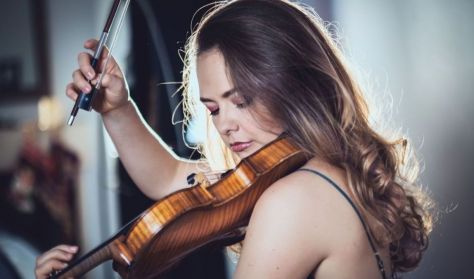
Haydn–Mozart – 1
In this program, Haydn’s symphony with unique instrumentation will be followed by a diverse group of Mozart’s works.

In this program, Haydn’s symphony with unique instrumentation will be followed by a diverse group of Mozart’s works.
Ön egy múltbeli eseményre keresett rá. Kérjük, válogasson aktuális kínálatunkból a Jegy.hu keresőjében!
Last event date: Saturday, November 06 2021 3:30PM
Haydn–Mozart – 1
Program:
Joseph Haydn: Symphony No. 22 in E-flat major (“The Philosopher”), Hob. I:22
Wolfgang Amadeus Mozart:
Adagio in E major for Violin and Orchestra, K. 261
Violin Concerto No. 1 in B flat major, K. 207
The Impresario – Overture, K. 486
Symphony No. 34 in C major, K. 338
The greatest hits of the 60s, 70s and 80s! No, this is not about a pop music radio. This is about the latest concert in the Haydn-Mozart Series of Gábor Takács-Nagy and the Festival Orchestra. Because when the conductor – famous for his precision and glowing enthusiasm – leads the BFO, even the most rarely performed pieces of the Viennese masters will become unforgettable, catchy tunes. In this program, Haydn’s symphony with unique instrumentation will be followed by a diverse group of Mozart’s works. The alternative slow movement written for the last violin concerto and the first Mozart piece for violin and orchestra will be performed with the solo of Moldavian violinist Alexandra Conunova, praised in the Strad for her “impressive range of colors”, and then, after the overture to a comedy, the concert will conclude with the symphony utilizing the brightness of C-major to the greatest possible extent.
A distinctive feature of Haydn’s Symphony No. 22 is that instead of flutes and oboes, the wind section has pairs of English horns and horns. In the first movement, the moniker of “The Philosopher” seems entirely apt for the wise dialogue of the instruments with natural and shaded tones, for which the atmosphere of quiet contemplating is created by the “walking” strings. The slow opening movement reflects Baroque traditions, however, the musical language is unmistakably Classical.
In 1776, the principal violinist of the Salzburg Court Orchestra, Antonio Brunetti, found the slow movement of Mozart’s violin concerto too long and contrived and ordered a new one from his colleague. The Adagio has become a popular single concert piece, but the original movement was not proven inferior either, as the concerto has always been performed with it, as it will be this time by Takács-Nagy and the BFO.
Although they were also played by Brunetti, Mozart composed his violin concertos basically for himself. He was only 17 when he wrote the first one. The piece is characterized by an abundance of melodies, virtuoso violin phrases and impressive instrumentation. Here, the violin does not yet want to grab the limelight from the orchestra, allowing it to introduce all the themes.
The rarely performed violin concerto will be followed by the overture to a rarely heard Singspiel. In 1786, Joseph II commissioned Mozart with a one-act play. The composer wrote five numbers for Gottlieb Stephanie’s comedy, which evolved around the problems of creating a theatre company and casting the roles. All this happened during a highly creative period of Mozart, in the year when The Marriage of Figaro was composed.
14 crossed-out bars – that is all that is left from the minuet of Mozart’s Symphony No. 34. The composition planned to have four movements was eventually left with only three, still representing the most modern traditions. The opening movement begins with a surprise, as here Mozart, who was always generous with melodies, does not present any real theme for 40 measures, setting only the atmosphere. After the highly symmetrical middle movement concerning the direction of the melodies, the piece is concluded with a finale in the tone of comic operas.
Énekes sztárokkal, világhírű kórussal és az ünnepkör legismertebb remekművével készül karácsonyi koncertjére a BFZ.
Jörg Widmann is a musical polymath par excellence. He is not only one of the greatest living masters of his instrument, the clarinet, but also an excellent composer, orchestrator and conductor. His compositions are palatable, entertaining, thought-provoking, and inventive. His programs are harmonious and carefully selected.
The concert conducted by the Grammy Award-winning ambassador of 20th and 21st century music will span several continents. David Robertson…
“One is only an instrument played by the universe. A symphony must be like the world. It must embrace everything”,…
Those attending the early music concert of the BFO’s ensemble playing historical instruments will be able to enjoy an extraordinary…
item(s) in basket
total:
Time limit has expired. Please, put item(s) in to basket again.